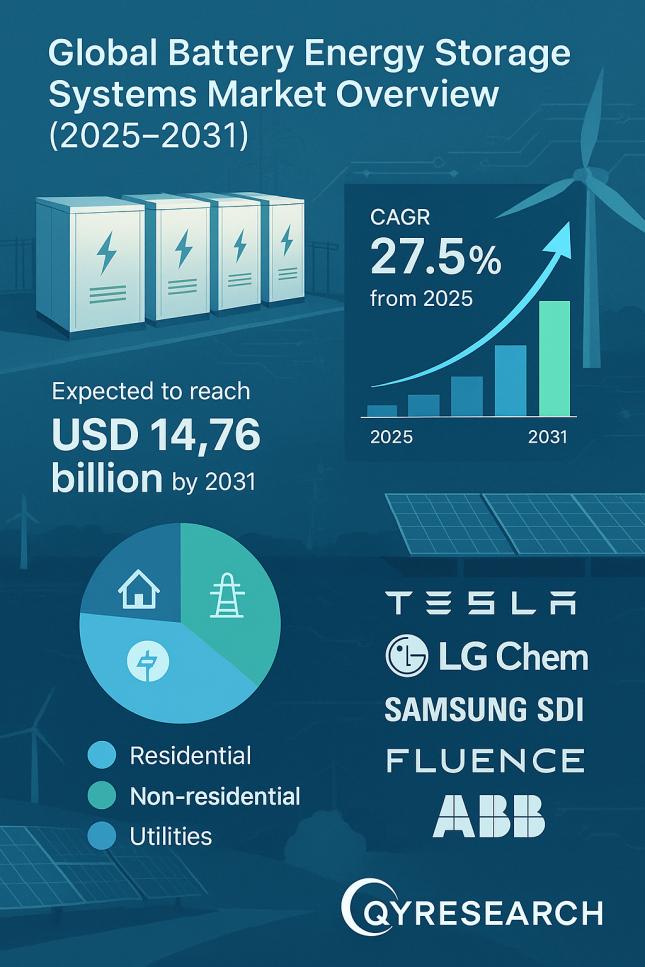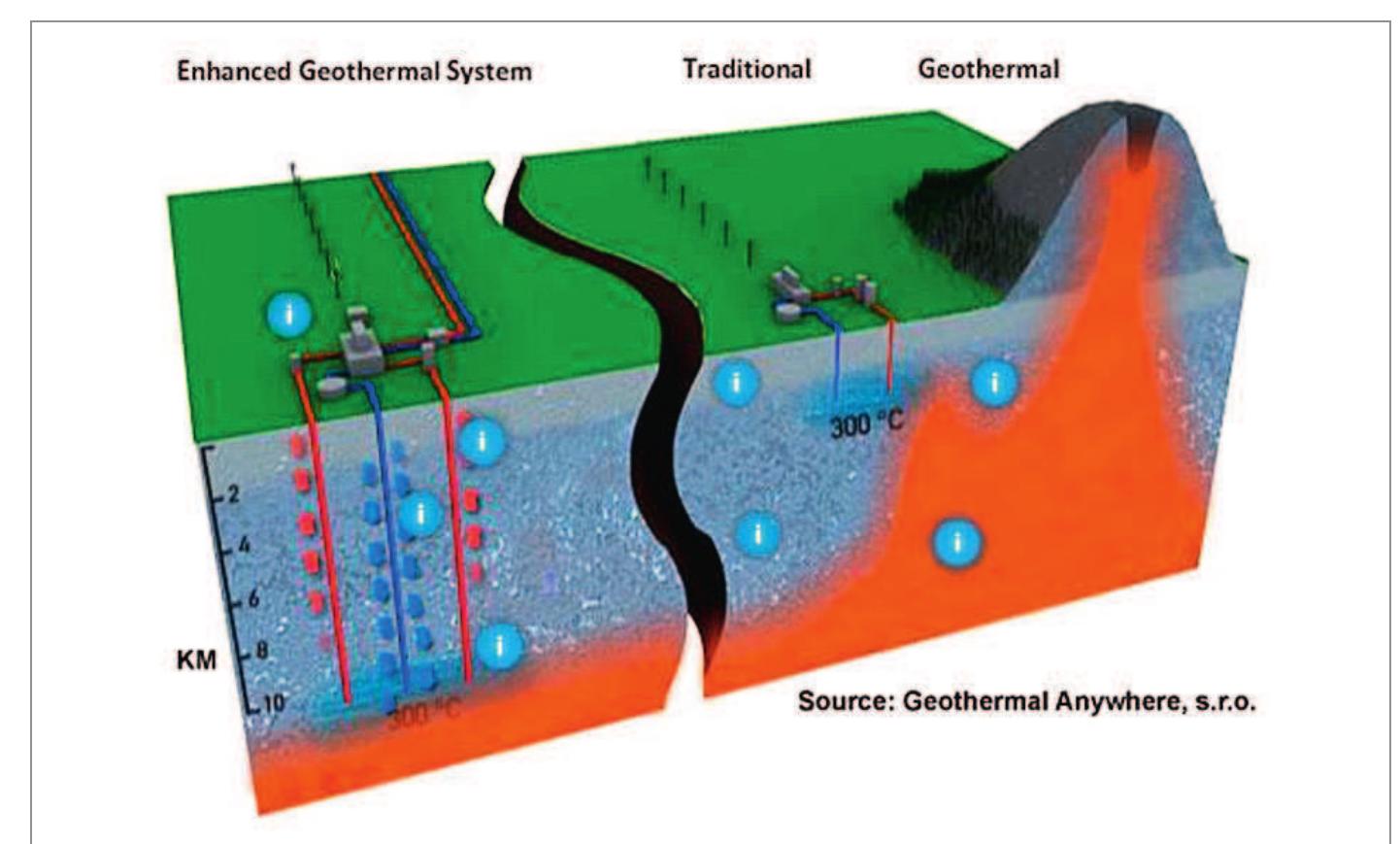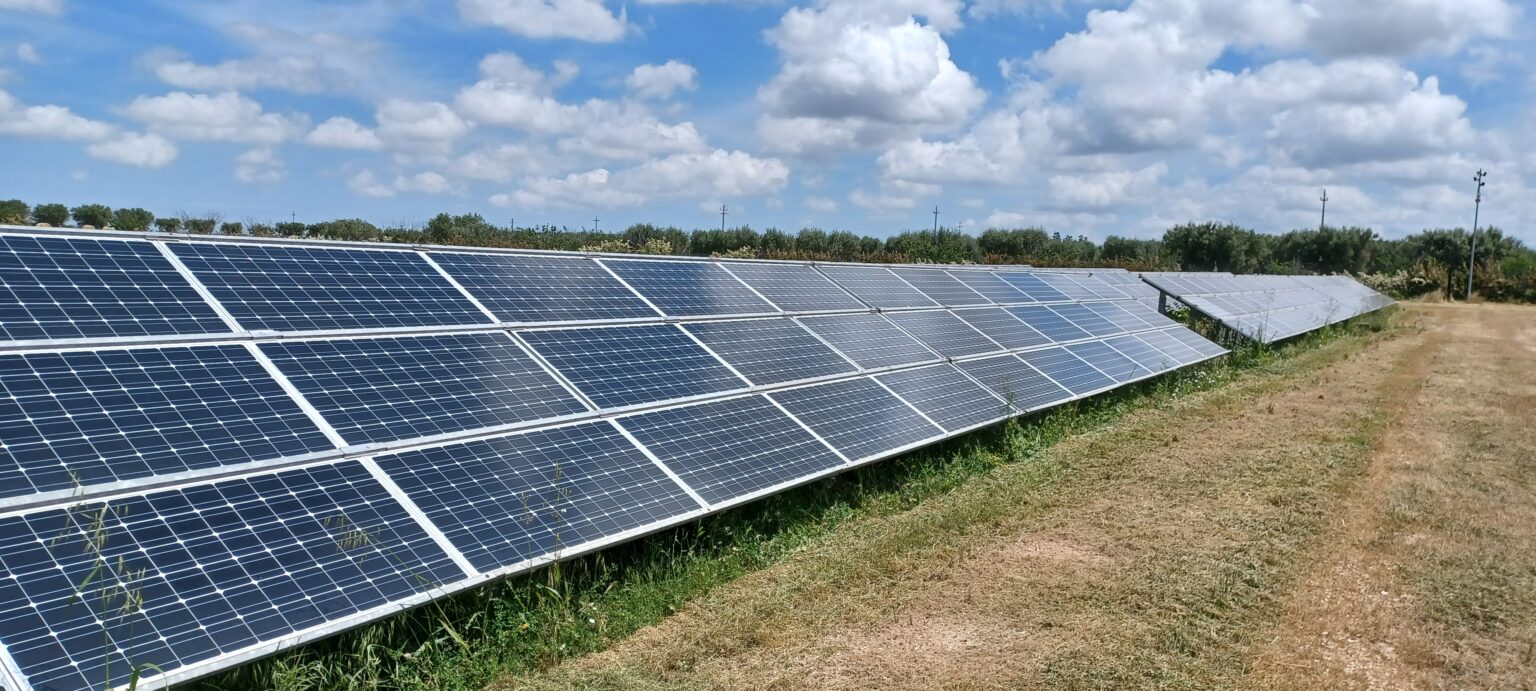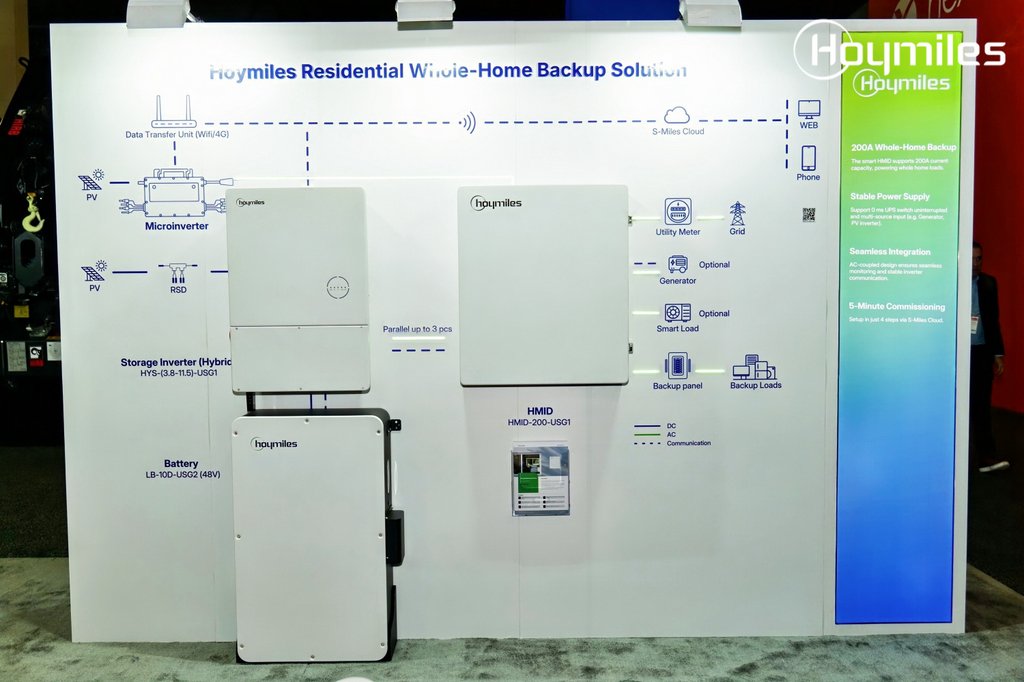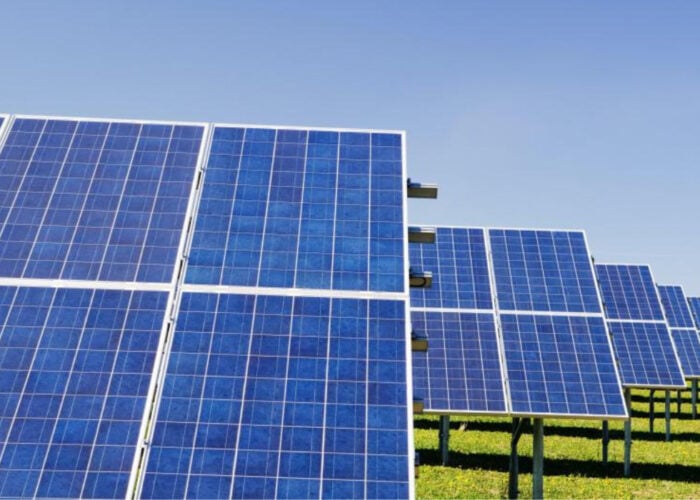Report on the Saudi Arabian Home Energy Management System Market and its Contribution to Sustainable Development Goals
Market Overview and Projections
The Home Energy Management System (HEMS) market in Saudi Arabia is projected to experience significant growth, with an estimated value of US$ 43.62 Million in 2024 expanding to US$ 145.69 Million by 2033. This represents a Compound Annual Growth Rate (CAGR) of 14.34% from 2025 to 2033. This expansion is intrinsically linked to the Kingdom’s commitment to national and global sustainability targets, particularly the United Nations’ Sustainable Development Goals (SDGs).
Alignment with Sustainable Development Goals (SDGs)
The development of the HEMS market is a direct contributor to several key SDGs. The national strategy, Vision 2030, emphasizes economic diversification and sustainability, creating a fertile ground for technologies that advance these goals. HEMS adoption is pivotal in achieving targets related to energy efficiency, sustainable infrastructure, and climate action.
Key Growth Drivers and SDG Contributions
-
Government Policies and Energy Efficiency Mandates
The Saudi government’s proactive promotion of energy-efficient technologies through Vision 2030 initiatives is a primary market driver. Programs led by the National Energy Services Company (Tarshid) focus on enhancing energy performance in residential buildings. These measures directly support:
- SDG 7 (Affordable and Clean Energy): By promoting technologies that reduce household energy consumption, making energy more affordable and sustainable.
- SDG 11 (Sustainable Cities and Communities): By integrating smart technology into new and existing housing, fostering the development of sustainable urban environments.
- SDG 13 (Climate Action): By mandating energy-saving measures that lower the carbon footprint of the residential sector.
-
Focus on Sustainability and Carbon Emission Reduction
Saudi Arabia’s commitment to achieving net-zero emissions by 2060 has increased the focus on reducing energy consumption at the consumer level. HEMS provide homeowners with the tools to monitor and manage their energy use, thereby reducing their environmental impact. This trend advances:
- SDG 12 (Responsible Consumption and Production): By empowering consumers to adopt more sustainable energy consumption patterns.
- SDG 13 (Climate Action): By directly contributing to the reduction of greenhouse gas emissions from residential energy use.
-
Technological Advancements in IoT and AI
The integration of the Internet of Things (IoT) and Artificial Intelligence (AI) is transforming home energy management. These technologies enable automated, predictive, and optimized energy use. This innovation is crucial for:
- SDG 9 (Industry, Innovation, and Infrastructure): By fostering innovation in smart grid technology and building resilient, intelligent infrastructure.
- SDG 7 (Affordable and Clean Energy): By leveraging advanced technology to maximize energy efficiency and system performance.
Challenges to Sustainable Implementation
Infrastructure and Digital Equity
The efficacy of HEMS is highly dependent on consistent and reliable internet connectivity for real-time data processing and remote management. While urban centers in Saudi Arabia possess robust internet infrastructure, disparities in access in rural or remote areas present a significant challenge. This digital divide could impede the equitable distribution of energy-saving technologies, potentially hindering uniform progress towards SDG 7 and SDG 9 by limiting access for certain populations.
Market Fragmentation and Lack of Standardization
The HEMS market is characterized by a multitude of vendors offering products that often operate on proprietary platforms. This lack of standardization creates interoperability and compatibility issues, complicating system integration for consumers. This fragmentation can act as a barrier to widespread adoption, slowing the potential positive impacts on SDG 7, SDG 11, and SDG 12 by increasing complexity and cost for end-users. Establishing industry-wide standards is essential to streamline integration and enhance user experience.
Key Market Participants
- Honeywell International, Inc.
- General Electric Company
- Comcast Cable (Xfinity)
- Panasonic Corporation
- Johnson Controls
- Schneider Electric SE
- Robert Bosch GmbH
Market Segmentation Analysis
By Product Type
- Lighting Controls
- Thermostats
- Self-Monitoring Systems
- Advanced Central Controllers
- Intelligent HVAC Controllers
By Component
- Hardware
- Software
- Services
By Deployment Type
- On-premise
- Cloud
SDGs Addressed in the Article
- SDG 7: Affordable and Clean Energy
- SDG 9: Industry, Innovation, and Infrastructure
- SDG 11: Sustainable Cities and Communities
- SDG 12: Responsible Consumption and Production
- SDG 13: Climate Action
Specific SDG Targets Identified
-
SDG 7: Affordable and Clean Energy
- Target 7.3: By 2030, double the global rate of improvement in energy efficiency.
The article is centered on the adoption of Home Energy Management Systems (HEMS) in Saudi Arabia, which are designed to “monitor, regulate, and lower their power use.” The entire premise of the HEMS market growth is based on improving residential energy efficiency, directly aligning with this target. The text highlights a “worldwide emphasis on energy efficiency” and government initiatives “aggressively promoting the use of energy-efficient technology.”
- Target 7.3: By 2030, double the global rate of improvement in energy efficiency.
-
SDG 9: Industry, Innovation, and Infrastructure
- Target 9.1: Develop quality, reliable, sustainable and resilient infrastructure… with a focus on affordable and equitable access for all.
The article points to the critical role of infrastructure, stating that HEMS “rely significantly on reliable internet connectivity.” It also identifies a challenge where “certain isolated or rural areas still struggle with access,” highlighting the need for equitable infrastructure development to ensure all citizens can access energy-saving technologies. - Target 9.4: By 2030, upgrade infrastructure and retrofit industries to make them sustainable, with increased resource-use efficiency and greater adoption of clean and environmentally sound technologies.
The article discusses government initiatives that “concentrate on improving overall energy performance… and upgrading existing structures.” It also emphasizes the role of technological advancements like “smart meters, the Internet of Things (IoT), and artificial intelligence (AI)” in making homes more sustainable and energy-efficient.
- Target 9.1: Develop quality, reliable, sustainable and resilient infrastructure… with a focus on affordable and equitable access for all.
-
SDG 11: Sustainable Cities and Communities
- Target 11.6: By 2030, reduce the adverse per capita environmental impact of cities.
The adoption of HEMS directly contributes to this target by enabling homeowners to “lower their power use” and achieve a “smaller environmental effect.” By optimizing residential energy consumption, these systems help reduce the overall environmental footprint of urban areas.
- Target 11.6: By 2030, reduce the adverse per capita environmental impact of cities.
-
SDG 12: Responsible Consumption and Production
- Target 12.2: By 2030, achieve the sustainable management and efficient use of natural resources.
HEMS are tools that promote the efficient use of energy, a key natural resource. The article notes that these systems provide “instruments for effectively monitoring and controlling power use,” which supports sustainable management and consumption patterns at the household level.
- Target 12.2: By 2030, achieve the sustainable management and efficient use of natural resources.
-
SDG 13: Climate Action
- Target 13.2: Integrate climate change measures into national policies, strategies and planning.
The article explicitly links the growth of the HEMS market to Saudi Arabia’s national strategies. It states that the nation’s focus on “lowering carbon emissions” and its goal of “having net-zero emissions by 2060” are key drivers for adopting these technologies, demonstrating the integration of climate goals into national planning (Vision 2030).
- Target 13.2: Integrate climate change measures into national policies, strategies and planning.
Indicators for Measuring Progress
-
Indicators for SDG 7 (Target 7.3)
- Reduction in household power use: The article implies this indicator by stating that HEMS enable homeowners to “monitor, regulate, and lower their power use.”
- Market value and adoption rate of HEMS: The report’s core data, such as the market growing from “US$ 43.62 Million in 2024” to “US$ 145.69 Million by 2033” with a “CAGR of 14.34%,” serves as a proxy indicator for the rate of improvement in energy efficiency technology adoption.
-
Indicators for SDG 9 (Target 9.1 & 9.4)
- Percentage of households with reliable internet access: This is implied by the challenge mentioned in the article: “certain isolated or rural areas still struggle with access.” Measuring the expansion of broadband would indicate progress.
- Rate of smart technology adoption: The article mentions the “spread of smart homes and IoT technologies” and the integration of “smart meters.” The number of homes equipped with these technologies would be a direct indicator.
-
Indicators for SDG 11 (Target 11.6)
- Per capita residential energy consumption: This is a direct measure of the “adverse per capita environmental impact of cities.” The article’s focus on lowering power use directly relates to this indicator.
-
Indicators for SDG 13 (Target 13.2)
- Reduction in carbon emissions from the residential sector: The article identifies “lowering carbon emissions” as a primary driver for HEMS adoption. Measuring the change in emissions would track progress toward the “net-zero emissions by 2060” goal.
- Level of public awareness: The article mentions “customers’ growing knowledge of environmental sustainability” as a key factor. Surveys measuring public awareness and behavioral change could serve as an indicator.
Summary of SDGs, Targets, and Indicators
| SDGs | Targets | Indicators |
|---|---|---|
| SDG 7: Affordable and Clean Energy | 7.3: Double the global rate of improvement in energy efficiency. |
|
| SDG 9: Industry, Innovation, and Infrastructure | 9.1: Develop quality, reliable, sustainable and resilient infrastructure.
9.4: Upgrade infrastructure and retrofit industries to make them sustainable. |
|
| SDG 11: Sustainable Cities and Communities | 11.6: Reduce the adverse per capita environmental impact of cities. |
|
| SDG 12: Responsible Consumption and Production | 12.2: Achieve the sustainable management and efficient use of natural resources. |
|
| SDG 13: Climate Action | 13.2: Integrate climate change measures into national policies, strategies and planning. |
|
Source: globenewswire.com


